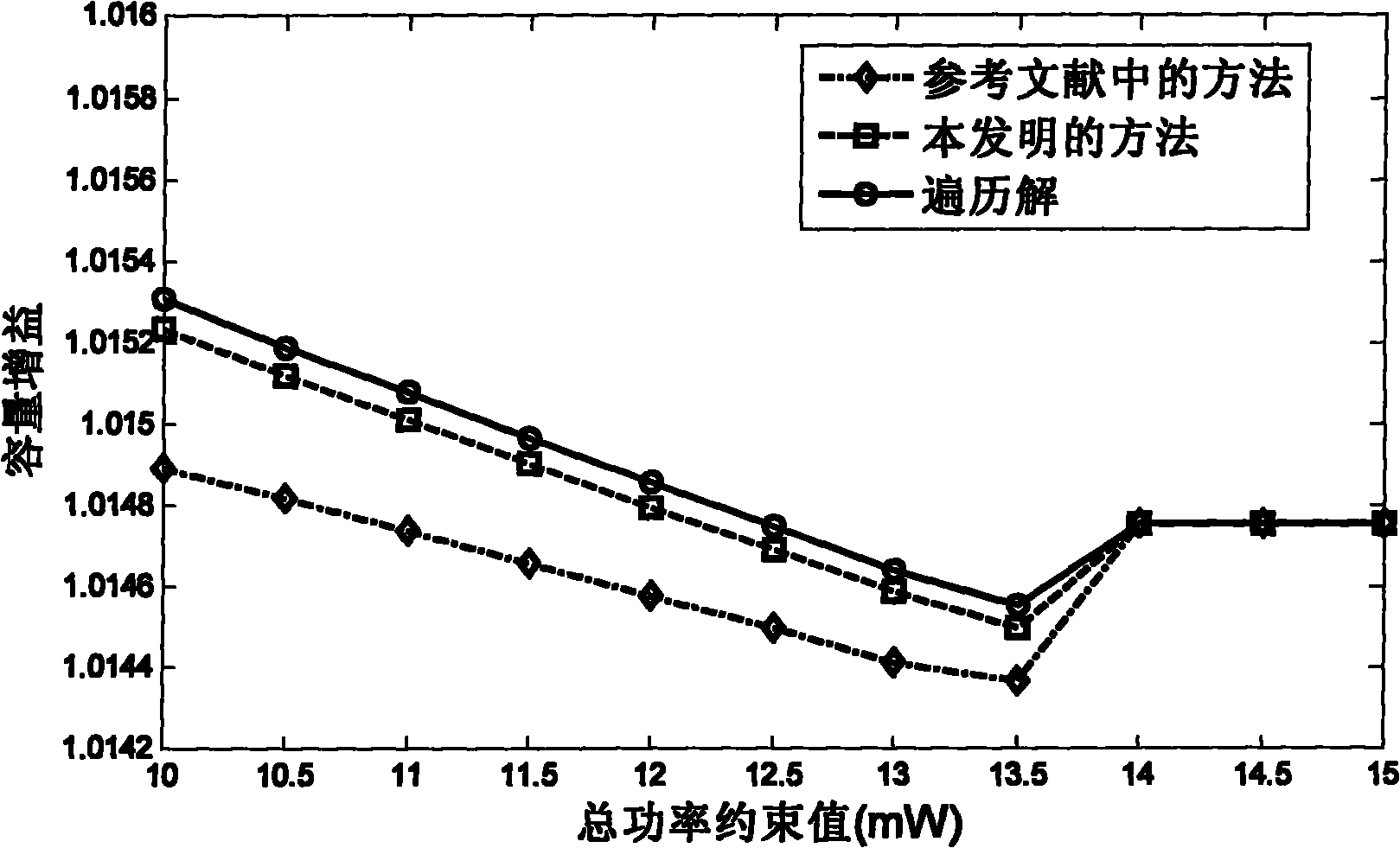Power allocation method in cognition orthogonal frequency division multiple access (OFDMA) system based on proportional fairness and interference constraints
A technology of proportional fairness and distribution method, applied in the fields of electrical components, wireless communication, etc.
- Summary
- Abstract
- Description
- Claims
- Application Information
AI Technical Summary
Problems solved by technology
Method used
Image
Examples
Embodiment
[0043] The carrier allocation process in this embodiment does not belong to the research scope of this algorithm. The carrier allocation method in the reference algorithm (“Increasing in Capacity of Multiuser OFDM System Using Dynamic Subchannel Allocation”, in Proc.IEEE VTC, 2000) is adopted, and only the carrier During the allocation process, the power on each carrier is changed from the average allocation in the reference algorithm (“Increasing in Capacity of Multiuser OFDM System Using Dynamic Subchannel Allocation”, in Proc. IEEE VTC, 2000) to the carrier power constraint value in this example. For the convenience of understanding, the carrier allocation method in the revised reference ("Increasing in Capacity of Multiuser OFDM System Using Dynamic SubchannelAllocation", in Proc.IEEE VTC, 2000) is briefly described as follows:
[0044] (1) Initialize the carrier set of each cognitive user Initialize the rate R of each cognitive user k= 0, k = 1, 2, ... K, Ω is the total...
PUM
 Login to View More
Login to View More Abstract
Description
Claims
Application Information
 Login to View More
Login to View More - Generate Ideas
- Intellectual Property
- Life Sciences
- Materials
- Tech Scout
- Unparalleled Data Quality
- Higher Quality Content
- 60% Fewer Hallucinations
Browse by: Latest US Patents, China's latest patents, Technical Efficacy Thesaurus, Application Domain, Technology Topic, Popular Technical Reports.
© 2025 PatSnap. All rights reserved.Legal|Privacy policy|Modern Slavery Act Transparency Statement|Sitemap|About US| Contact US: help@patsnap.com



